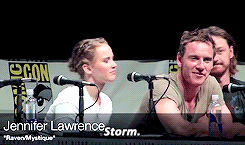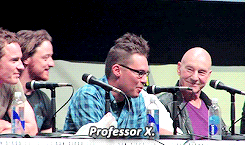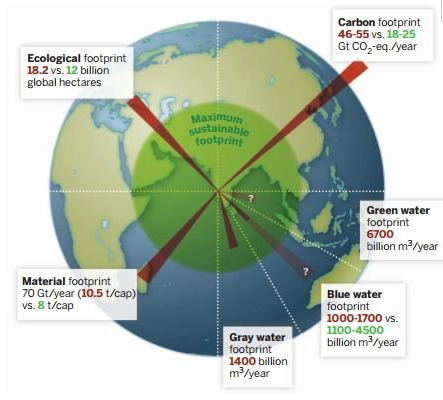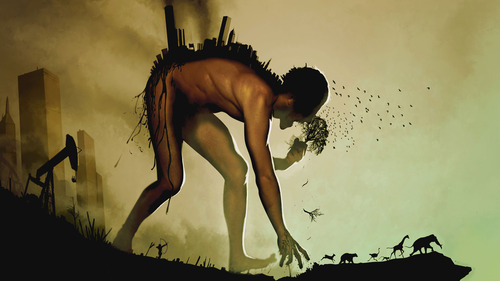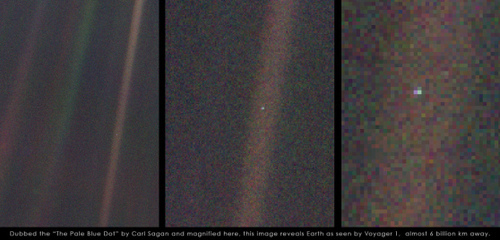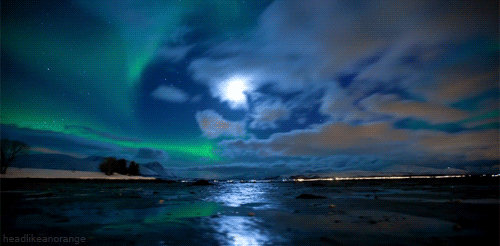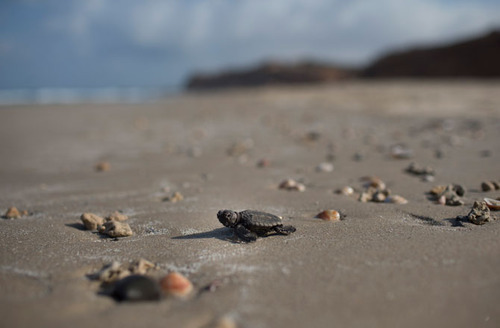Raeden Zen's Blog, page 102
June 23, 2014
lumixercalderic:
Favorite character of X-Men
sexhaver:
rasputin:
Portuguese designer Susana Soares has...
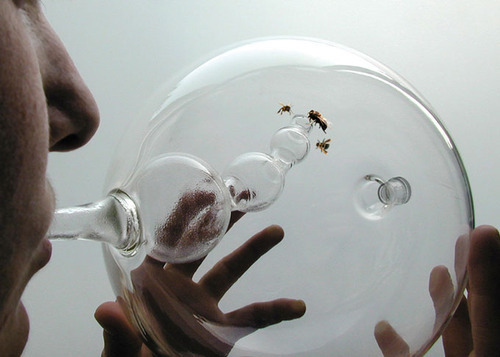

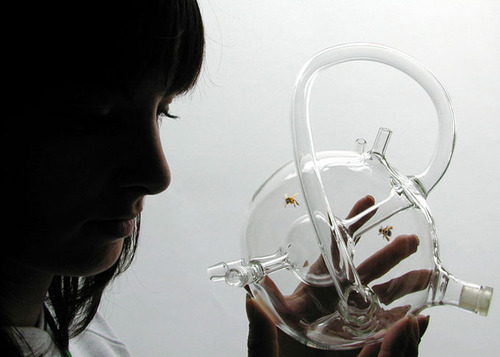
Portuguese designer Susana Soares has developed a device for detecting cancer and other serious diseases using trained bees. The bees are placed in a glass chamber into which the patient exhales; the bees fly into a smaller secondary chamber if they detect cancer.
Scientists have found that honey bees - Apis mellifera - have an extraordinary sense of smell that is more acute than that of a sniffer dog and can detect airborne molecules in the parts-per-trillion range.
Bees can be trained to detect specific chemical odours, including the biomarkers associated with diseases such as tuberculosis, lung, skin and pancreatic cancer.
breathe into the BEE ORB to reveal your fate
"In less than ten thousand years, domestication has increased the weight of wool grown by sheep from..."
- Carl Sagan, Cosmos (via thedragoninmygarage)
sagansense:
A recently published article from Laboratory...

A recently published article from Laboratory Equipment highlights another less-than-shocking study indicating humanity’s global footprint is…wait for it…environmentally unsustainable.
"Our article mainly focuses on understanding the interdependence of the different types of footprints and the role that businesses, consumers and governments play in creating our overall footprint. We know that we are not sufficiently sustainable in our actions. But the interdependence has not previously been shown in this way. The various players have divergent interests and take too little responsibility. Consumers do not feel responsible for what producers do and politicians focus too much on growth, exports and cheap imports. For example, who feels responsible for the distress caused when we deplete the resources in China because of cheap imports? If you buy a stolen bicycle, you are liable to punishment and individually responsible. But isn’t the consumption of products that are not produced sustainably also irresponsible behavior? Rethinking the global supply chain, that’s what it’s all about.”
— Arjen Hoekstra, Professor of Water Management, Univ. of Twente.
From the article:
Hoekstra, mainly known for his work on the water footprint, has published the research together with his counterpart Thomas Wiedmann, from the Univ. of New South Wales in Australia. In Science, the authors describe how intertwined the global economy, politics, consumption and trade are in their effect on global land, water and raw material consumption and on the climate.
Hoekstra and Wiedmann map out mankind’s total environmental footprint in a scientific, unique manner, but also realize that a solution is not immediately obvious.
Hoekstra asserts, "This of course requires fundamental changes in the global economy and international cooperation. But understanding the role of the various parties and the enormous complexity underlying our overall footprint is a first step. Everyone should assume and be given greater supply-chain responsibility; only then can we sustain our society."
We are continuously receiving clear indications from our planet that the ecosystem which sustains us is being neglected and abused, while religious and political leaders alike perpetuate the most arbitrary squabbles over territory, finite resources, rhetoric, opinion, class warfare, all revolving around money, one way or the other, while the science - the natural reality-interrogating process responsible for you know, our entire survival - delivers a plethora of alternatives and detours around the shadows of our mistakes.
Image art courtesy of indiedb
If you haven’t seen the 76-minute film END:CIV, you can watch it HERE or HERE. The film examines our culture’s addiction to systematic violence and environmental exploitation, and probes the resulting epidemic of poisoned landscapes and shell-shocked nations. Based in part on 'Endgame', the best-selling book by Derrick Jensen, END:CIV asks: “If your homeland was invaded by aliens who cut down the forests, poisoned the water and air, and contaminated the food supply, would you resist?”
I’m not suggesting direct action and anarchy are a solution worthy to our cause. I’m simply recommending a film worth your time to consider what’s at stake if we continue “business as usual." For those of you who haven’t discovered The Venus Project yet, get to know a man named Jacque Fresco first (this 1971 video clip from his interview on Larry King provides a nice segue). He’s a self-proclaimed futurist and social engineer whose credentials you can browse HERE.
My referencing The Venus Project doesn’t mean I vouch for everything they propose, because we need an “all-minds-in” approach to progress. I support the project like I support many others, because it’s progressive, forward/critical-thinking, and bolstered by STEAM (science, technology, engineering, art, math), education reform, scientific literacy, and a true intellectual (r)evolution of human society.
The assessments from these studies, the statements made by acclaimed conservationists, environmental policy holders, congressional staffers, scientists, activists, …they all have one thing in common: they are all human beings, living on a single planet with a meticulous interconnected system governed by the physical laws of nature. And one of these human beings - one of us - stepped away (in the early 1980’s) from the narrow day-to-day perspective to remind us of something which ripples throughout our society today (which you can listen to here)…
"Fundamental changes in society are sometimes labeled ‘impractical’ or ‘contrary to human nature’…as if there were only one human nature. But fundamental changes can clearly be made, we’re surrounded by them. In the last two centuries, abject slavery, which was with us for thousands of years, has almost entirely been eliminated in a stirring world wide revolution. Women, systematically mistreated for millennia, are gradually gaining the political and economic power traditionally denied to them. And some wars of aggression have recently been stopped or curtailed because of a revulsion felt by the people in the aggressor nations. The old appeals to racial, sexual, and religious chauvinism, and to rabid nationalist fervor are beginning not to work. A new consciousness is developing which sees the earth as a single organism, and recognizes that an organism at war with itself is doomed. We are one planet."
— Carl Sagan; Cosmos: A Personal Voyage; Episode 13 “Who Speaks for Earth?”
franryott:
I actually can’t cope with this
thedemon-hauntedworld:
The remains of a star gone...
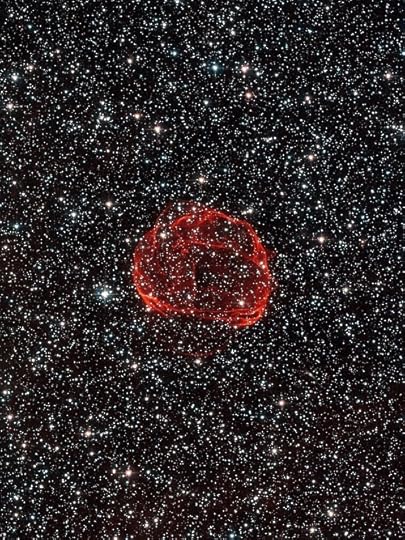
The remains of a star gone supernova
These delicate wisps of gas make up an object known as SNR B0519-69.0, or SNR 0519 for short. The thin, blood-red shells are actually the remnants from when an unstable progenitor star exploded violently as a supernova around 600 years ago. There are several types of supernova, but for SNR 0519 the star that exploded is known to have been a white dwarf star — a Sun-like star in the final stages of its life.
SNR 0519 is located over 150 000 light-years from Earth in the southern constellation of Dorado (The Dolphinfish), a constellation that also contains most of our neighbouring galaxy the Large Magellanic Cloud (LMC). Because of this, this region of the sky is full of intriguing and beautiful deep sky objects.
The LMC orbits the Milky Way galaxy as a satellite and is the fourth largest in our group of galaxies, the Local Group. SNR 0519 is not alone in the LMC; the NASA/ESA Hubble Space Telescope also came across a similar bauble a few years ago in SNR B0509-67.5, a supernova of the same type as SNR 0519 with a strikingly similar appearance.
Credit: ESA/Hubble & NASA. Acknowledgement: Claude Cornen
discoverynews:
Sea Turtles From Shell to Surf
s-c-i-guy:
sciencefriday:
Happy first day of...

Happy first day of summer!
Definitely one of the coolest gifs I’ve seen in a while
artandsciencejournal:
Art as Aftershock
Earthquakes are...

Luke Jerram, Tōhoku Japanese Earthquake Sculpture, 2011.
Rotated data sculpture - made through rapid prototyping.
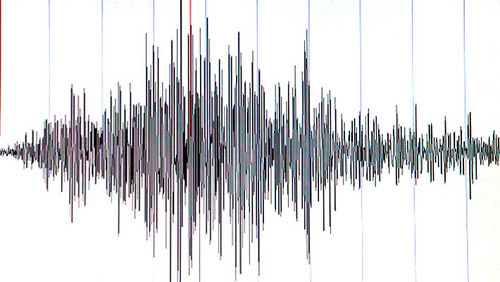
Seismogram from the Japanese Earthquake, taken from lukejerram.com

Detail of ruler and drawing 01, Carlos Amorales, 2010.
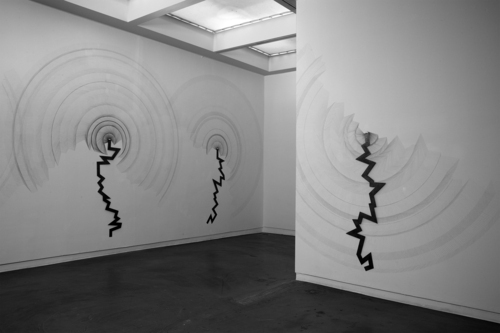
Carlos Amorales, Vertical Earthquake,
2010, Steel rulers, graphite on wall.
Dimensions according to space.
Art as Aftershock
Earthquakes are dangerous phenomena, yet two artists chose to present these natural disasters, in a way that makes viewers contemplate, rather than fear them.
Luke Jerram and Carlos Amorales created works that comment on the 2011 Japanese Tōhoku earthquake and tsunami, and 1985 earthquake in Mexico City, respectively. Their works allow viewers to contemplate the nature of earthquakes with the help of visualizations through seismographic data.
In Jerram’s piece, the artist took the seismographic data from the Tōhoku earthquake, and rotated it using a computer program to see the data in three-dimensions, later printing it in those dimensions. The sculpture, made in 2011, represents nine minutes of the earthquake, allowing viewers to calculate, and imagine, the severity of the disaster on their own.
Amorales approaches the 1985 earthquake in a more theoretical presentation, in “Vertical Earthquake” (2010). Rather than using data, the artist creates his own fault lines and cracks on the walls, drawing epicentres around each. The artist chose to capture the chaos and emotion of the event. Within the installation, newspaper clippings of the disaster are displayed, with fault lines drawn on them as well.
Where Jerram uses data to help visualize the severity of the earthquake in Japan, Morales plays with drama and emotion, creating a fragmented image which symbolically reflects the earthquake that he witnessed. Both pieces however, are sobering reminders of the immense power our Earth has over man-made constructions.




